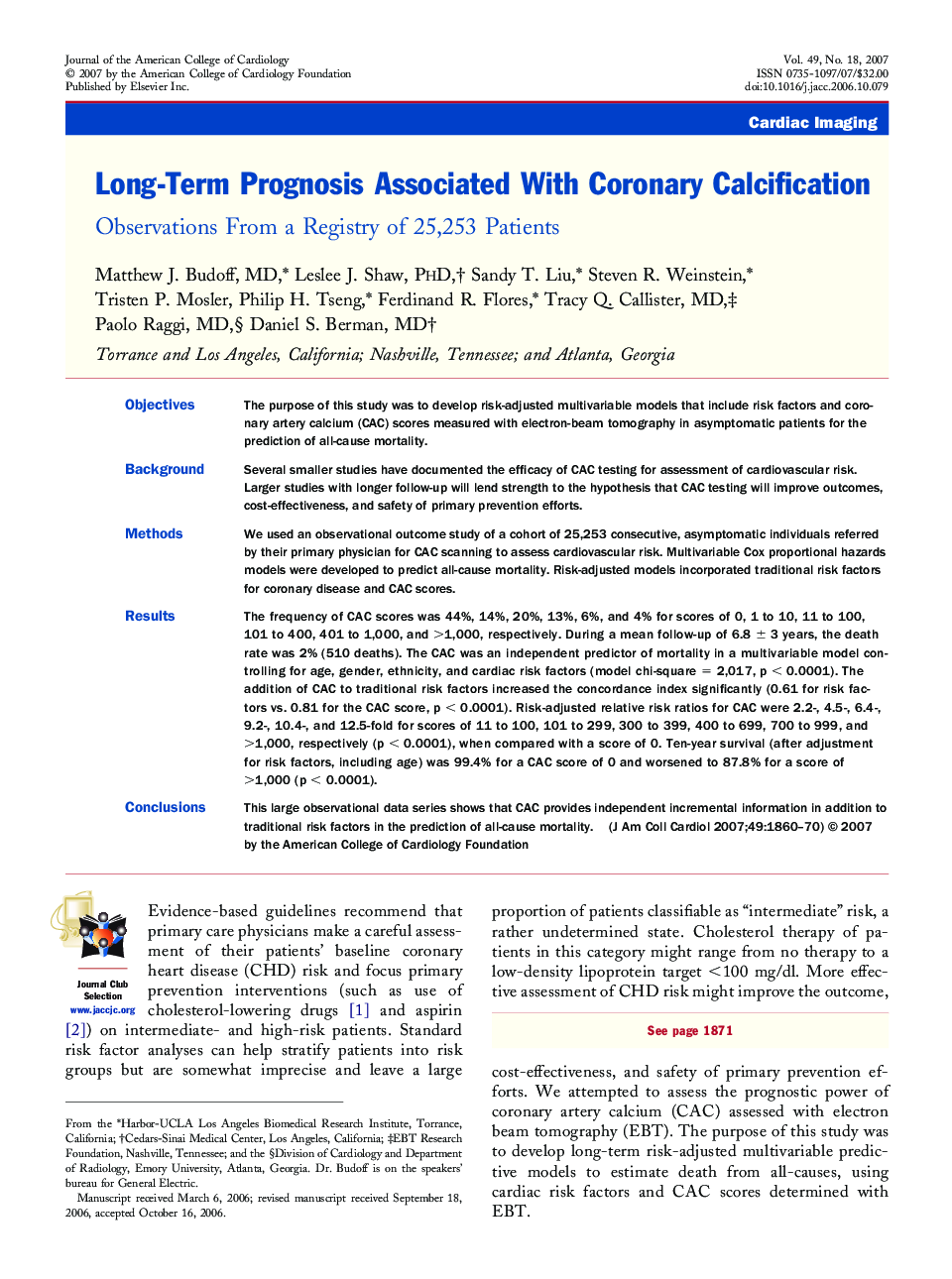| کد مقاله | کد نشریه | سال انتشار | مقاله انگلیسی | نسخه تمام متن |
|---|---|---|---|---|
| 2953212 | 1577476 | 2007 | 11 صفحه PDF | دانلود رایگان |

ObjectivesThe purpose of this study was to develop risk-adjusted multivariable models that include risk factors and coronary artery calcium (CAC) scores measured with electron-beam tomography in asymptomatic patients for the prediction of all-cause mortality.BackgroundSeveral smaller studies have documented the efficacy of CAC testing for assessment of cardiovascular risk. Larger studies with longer follow-up will lend strength to the hypothesis that CAC testing will improve outcomes, cost-effectiveness, and safety of primary prevention efforts.MethodsWe used an observational outcome study of a cohort of 25,253 consecutive, asymptomatic individuals referred by their primary physician for CAC scanning to assess cardiovascular risk. Multivariable Cox proportional hazards models were developed to predict all-cause mortality. Risk-adjusted models incorporated traditional risk factors for coronary disease and CAC scores.ResultsThe frequency of CAC scores was 44%, 14%, 20%, 13%, 6%, and 4% for scores of 0, 1 to 10, 11 to 100, 101 to 400, 401 to 1,000, and >1,000, respectively. During a mean follow-up of 6.8 ± 3 years, the death rate was 2% (510 deaths). The CAC was an independent predictor of mortality in a multivariable model controlling for age, gender, ethnicity, and cardiac risk factors (model chi-square = 2,017, p < 0.0001). The addition of CAC to traditional risk factors increased the concordance index significantly (0.61 for risk factors vs. 0.81 for the CAC score, p < 0.0001). Risk-adjusted relative risk ratios for CAC were 2.2-, 4.5-, 6.4-, 9.2-, 10.4-, and 12.5-fold for scores of 11 to 100, 101 to 299, 300 to 399, 400 to 699, 700 to 999, and >1,000, respectively (p < 0.0001), when compared with a score of 0. Ten-year survival (after adjustment for risk factors, including age) was 99.4% for a CAC score of 0 and worsened to 87.8% for a score of >1,000 (p < 0.0001).ConclusionsThis large observational data series shows that CAC provides independent incremental information in addition to traditional risk factors in the prediction of all-cause mortality.
Journal: Journal of the American College of Cardiology - Volume 49, Issue 18, 8 May 2007, Pages 1860–1870